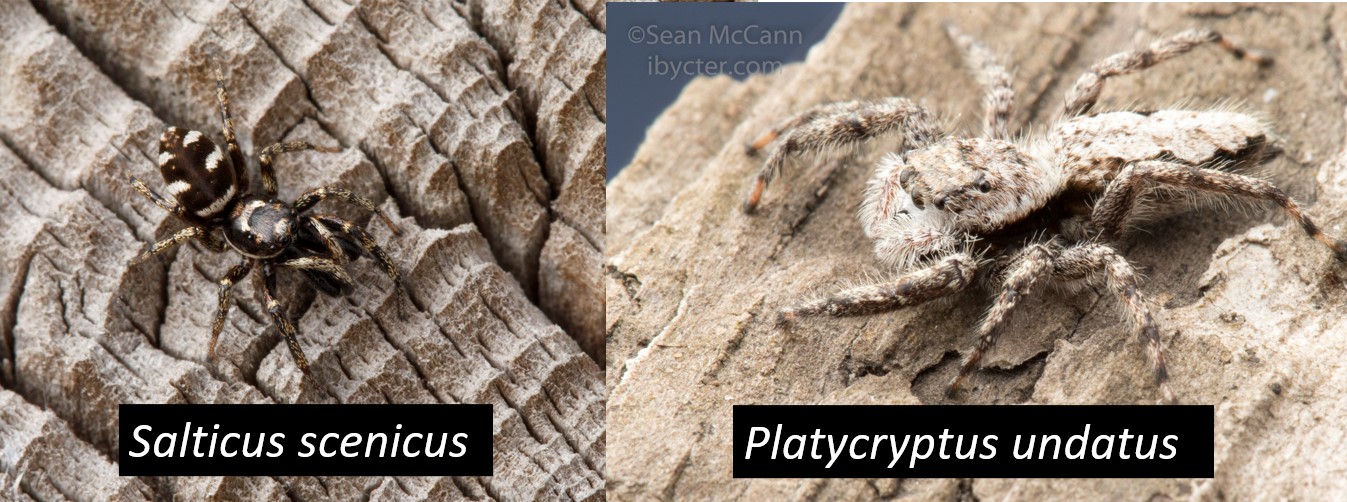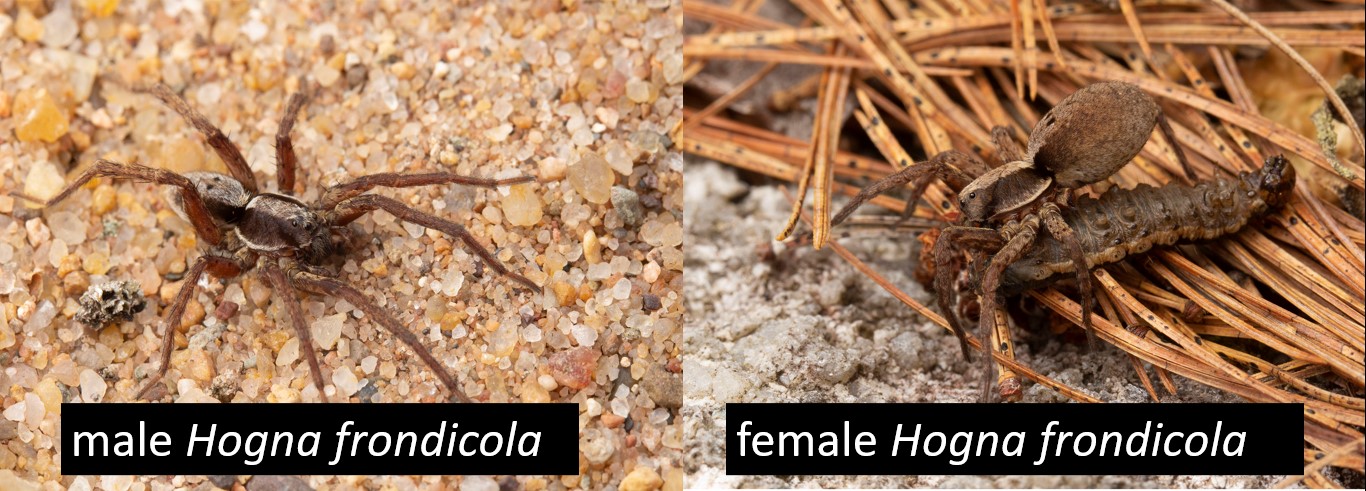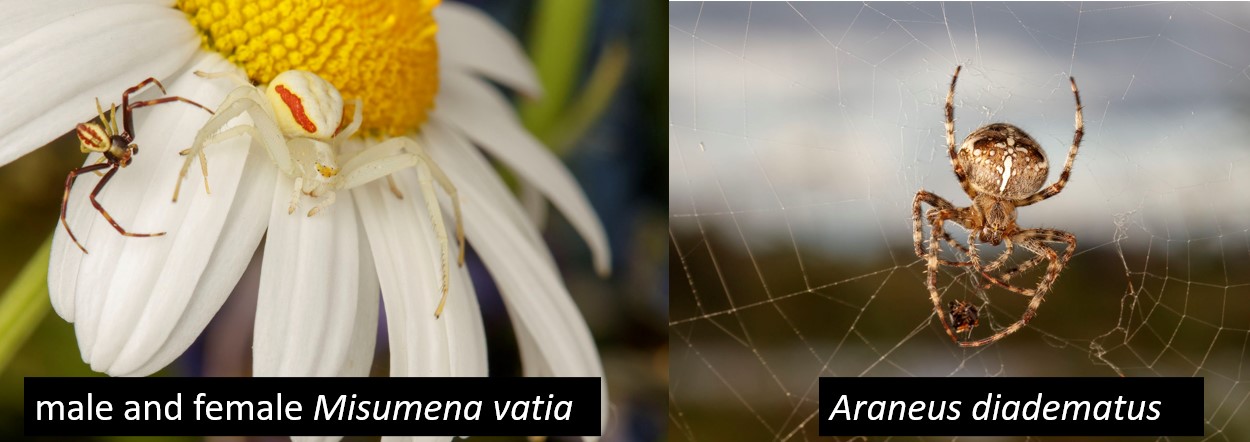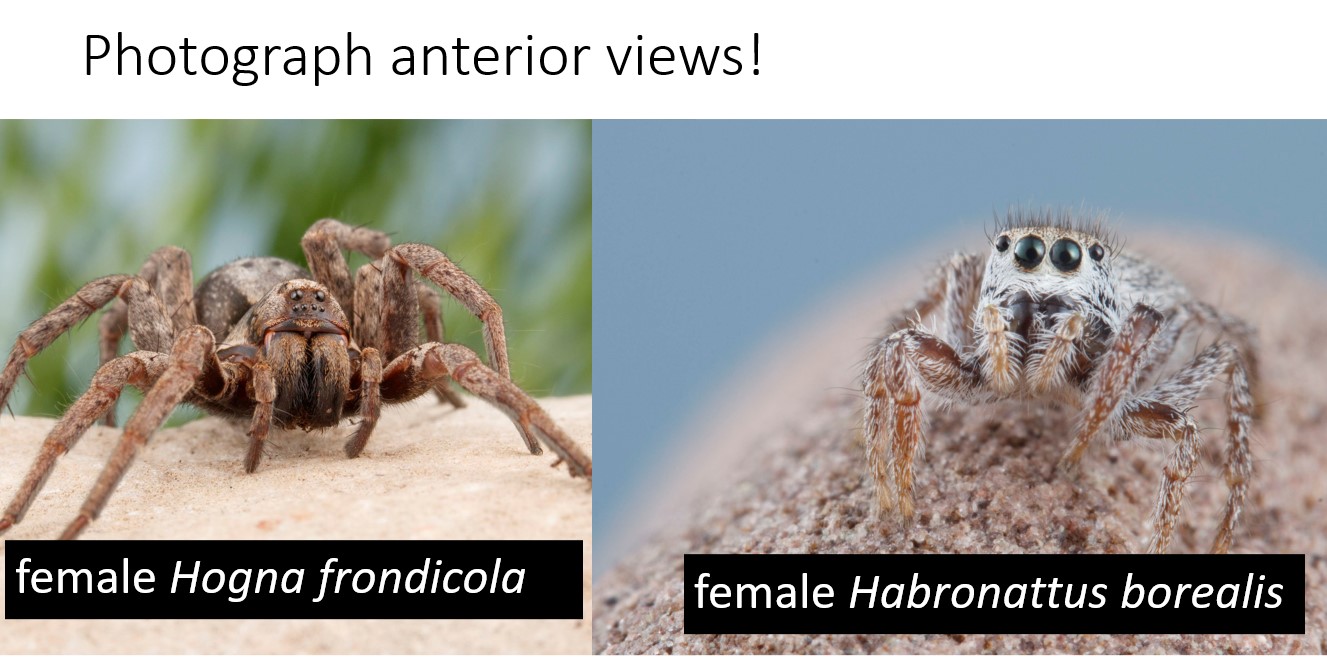Finding and photographing spiders for the City Nature Challenge
Hi everyone,
My name is Sean McCann, I am a naturalist and spider enthusiast living in Wolfville Nova Scotia.
I would like to encourage you, during the upcoming City Nature Challenge, to try to find some spiders around your home and in the field that can be included in your iNaturalist submissions!
You may find many spiders just by careful searching, looking on surfaces such as fences, walls, and bare ground. One of the most obvious groups are the jumping spiders. These can be photographed relatively easily, and luckily many species can be identified with just good quality photograph of their patterns.
Two species you may encounter are the introduced Salticus scenicus (zebra jumper), and the wall-loving Playtycryptus undatus (gray wall jumper). Both of these may be found on buildings, but also may be found on trees and fences. They are day-active spiders, and like a warm sunny day to go out hunting.
Keep your eyes out in forested habitats for the large and beautiful forest wolf spider, Hogna frondicola.
These attractive spiders are mating this time of year, and so both males and females can be found out hunting for food and mates. These are large brown spiders with a gray stripe down the back, and often one or two pairs of small dark spots on the abdomen.
If you want to find vegetation-dwelling spiders, try taking an umbrella, holding it under a bush, and vigorously beating the bush with a stick. This is an excellent way to find spiders hidden in the leaves and flowers that might not be readily apparent. You may find web builders such as orb weavers, or perhaps crab spiders this way. Look for Misumena vatia (the goldenrod crab spider) and the introduced Araneus diadematus (diadem orb weaver)
Go out, have fun, and try to get some spider images! I recommend getting images of the dorsal surface (the back) showing all the coloration, and if possible, a view from the front showing the eye arrangement. Enjoy your time finding and observing spiders!




